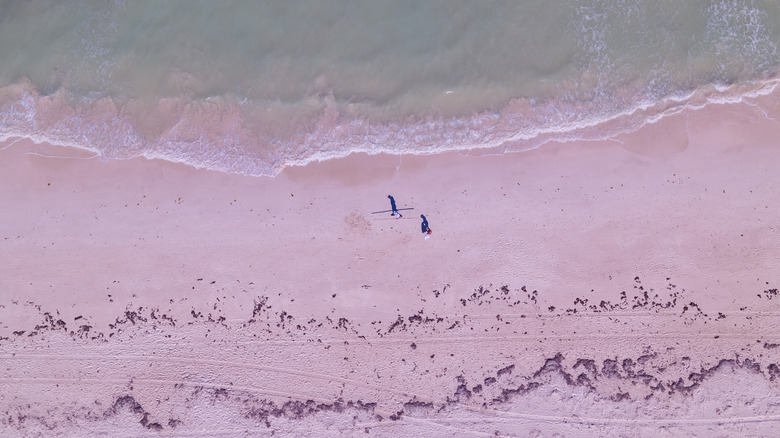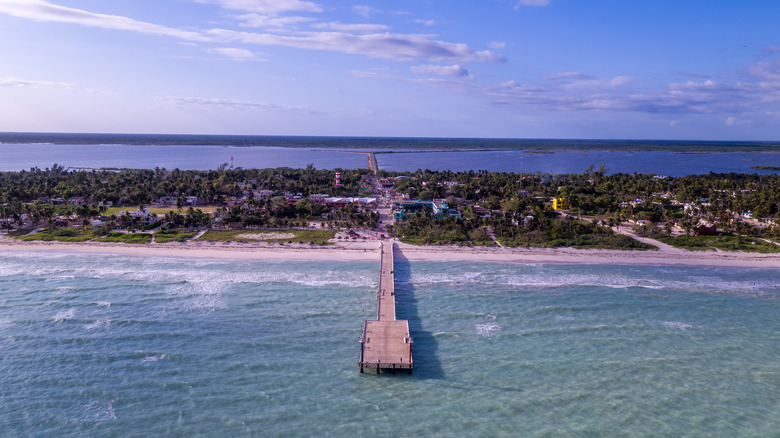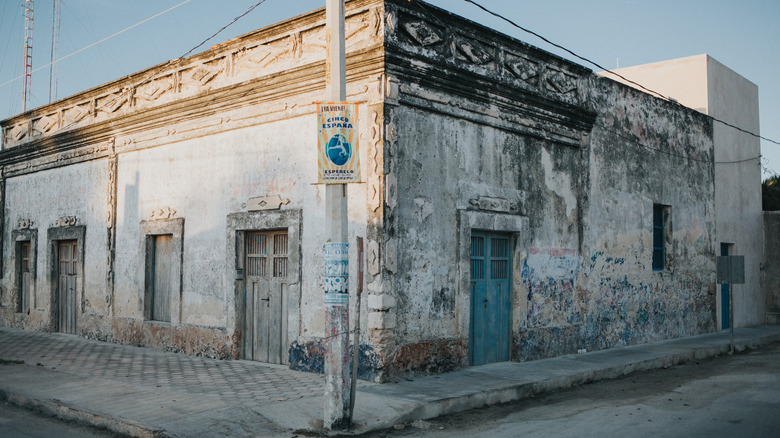The Little-Known Mexican Beach Town With Safe And Quiet White Sand Beaches At A Low Cost
Life is pretty simple in El Cuyo, Mexico. Each morning, local fishers motor out to sea in their boats, hoping for a good catch, just as they have done for generations. The town has a church, a pharmacy, and a single gas station. Grocers and produce stands are scattered around the little pueblo. Only about 2,000 people live in El Cuyo, which lies on the northern tip of the Yucatán Peninsula, far from any major city. In fact, the town occupies a tiny piece of the Ría Lagartos Biosphere Reserve, a protected, 233-square-mile habitat for flamingoes, sea turtles, and crocodiles.
This remoteness has made El Cuyo a magnet for savvy travelers trying to escape the Yucatán's many tourist traps — and a sprawling white sand beach certainly adds to the allure. El Cuyo sits on a narrow strip known as a welded barrier island, as it's attached to the mainland on both ends. Most tourists will arrive by car or bus, driving over a long earthen causeway across a lagoon. El Cuyo's close-knit community and low crime rate have won the town a reputation as one of the safest areas to visit in Mexico.
An affordable and welcoming escape on the Caribbean Sea
Although El Cuyo remains an easygoing small town, it's also well equipped for tourists. There's a wide array of boutique hotels and beachfront cabins, and seasoned campers can set up their tents on special sites. Many of the budget hostels have dorm beds under $20 per night, and even the mid-range and upscale villas remain reasonable, with options under $100.
El Cuyo's geography ensures that you're never far from Caribbean waves, and the beachfront is public and free to visit. You can easily zip around town on a rented bicycle or golf cart, and after an afternoon of paddleboarding or kitesurfing, you can pick from dozens of different restaurants, most specializing in seafood or traditional Mexican dishes.
Indeed, catching fish is a huge part of the local economy, and tourists are welcome to join in the fun. There are several local tour companies that will arrange charters, and anglers of all experience levels can ride out into the ocean and cast reels. Nothing tastes quite like baked snook you caught yourself.
Enjoy Old Mexican charm and abundant wildlife
Part of El Cuyo's charm is its simple, old-school architecture. Just about all of the town's buildings are one or two stories, and many have a vintage look. Walls are painted in colorful murals, which depict local animals, landmarks, and Mayan pyramids. There is a striking absence of chain stores and restaurants; most of the enterprises in town are small businesses and family-run. The land is almost perfectly flat, and the streets are roughly laid out as a grid, so it's pretty much impossible to get lost.
The surrounding reserve is rich in biodiversity, and hikers can enjoy birdsong and wildlife cameos any day of the year. About 20 miles down the coast is the town of Las Coloradas, which is famous for its startling Pink Lagoon. And 15 miles beyond that is the Itzamkanac Crocodile Farm, which is by far the safest way to view this native reptiles. The beaches around El Cuyo are also a common nesting ground for sea turtles, during egg-laying season.
The Yucatán's secret magic
With such a blissful atmosphere, what keeps El Cuyo from getting overrun with tourists? Partly it's the location: The closest major airport is Cancún, which is nearly three hours away by car, so travelers have to really want to come here. The town is also quiet and low-tech; there are no ATMs, so visitors should plan to bring cash for most transactions. You won't find large, all-inclusive resorts, and the town doesn't have an airport of any kind, not even a landing strip. The general sleepiness will turn off a lot of spring breakers and retirees, who may prefer the thrill and action of, say, Playa del Carmen. Unfortunately, the boozy atmosphere and congested tourism have given Yucatán hotspots like Tulum a reputation for danger. El Cuyo is a very low-stress alternative.
While most visitors will arrive from Cancún and return the same way, you'll notice that the city of Mérida is about 3.5 hours away — only slightly farther than Cancún, in the opposite direction. The overlooked capital of the Yucatán makes for an affordable warm-weather winter vacation, treating visitors to Colonial neighborhoods, a spicy culinary scene, and budget-friendly stays in historic haciendas. In short, this peninsula has a lot more to see than many tourists realize.



